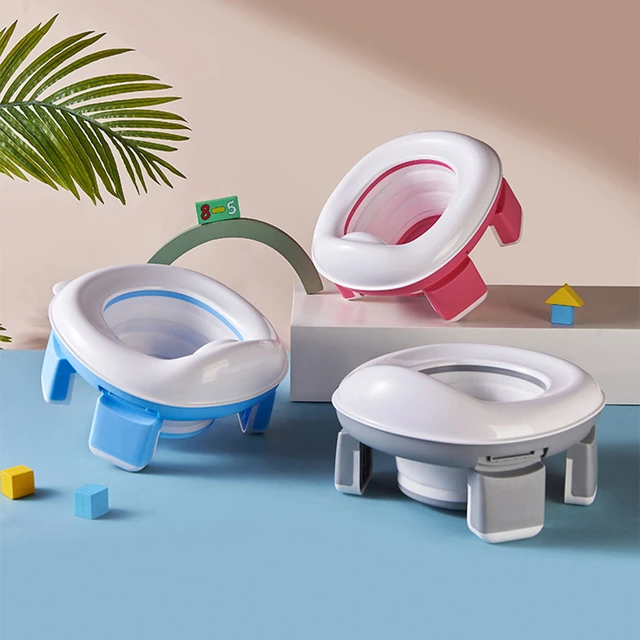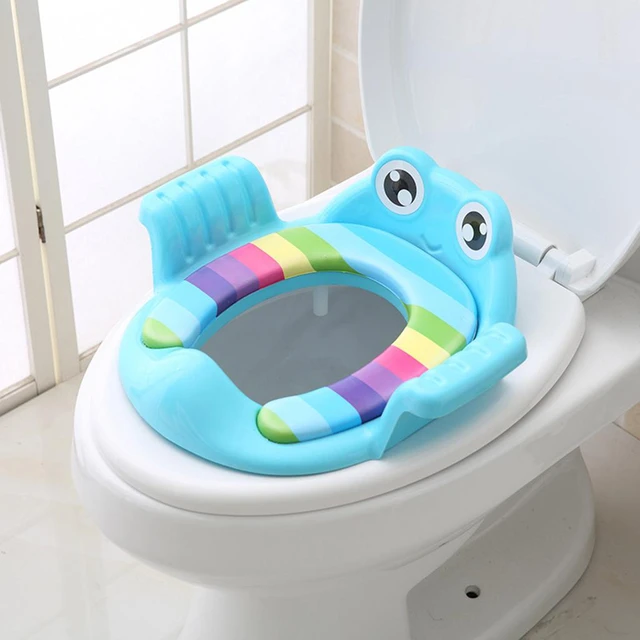 Introduction:
Introduction:
A baby toilet seat is an essential accessory that aids in potty training and promotes independence and hygiene for young children. It provides a safe and comfortable platform for toddlers to transition from diapers to using the toilet like adults. In this comprehensive guide, we will explore the features, benefits, and considerations of a baby toilet seat. By understanding its functionality, types, and maintenance requirements, parents and caretakers can make informed decisions and support the successful potty training journey of their little ones.
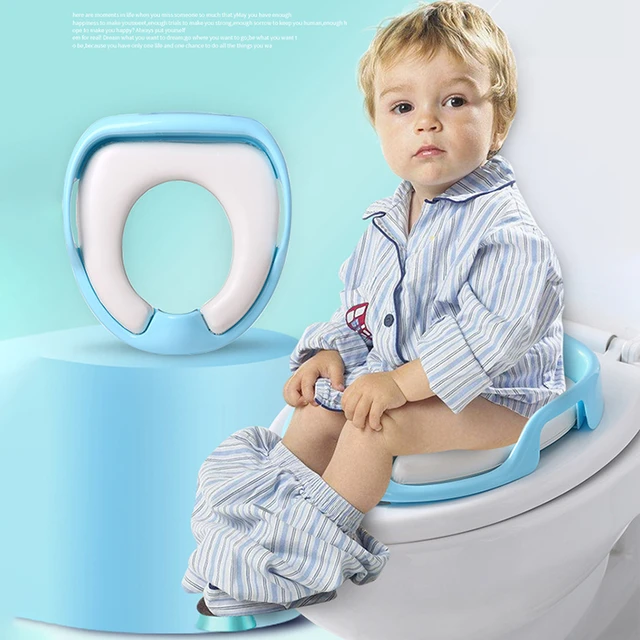 Some common materials used for baby toilet seats:
Some common materials used for baby toilet seats:
Baby toilet seats are available in various materials, each with their own advantages and considerations. Here are some common materials used for baby toilet seats:
Plastic:
It is a popular choice for baby toilet seats due to its lightweight nature, affordability, and ease of cleaning. Plastic seats are often made from durable and non-toxic materials, ensuring safety for the child. They are also available in a range of colors and designs.
Polypropylene:
Polypropylene is a type of plastic commonly used for baby toilet seats. It is known for its strength, resistance to chemicals, and durability. Polypropylene seats are lightweight, easy to clean, and can withstand the rigors of frequent use.
Padded Foam:
Some baby toilet seats feature a foam padding that provides added comfort and support for the child during potty training. The foam is often covered with a waterproof and easy-to-clean material for hygiene purposes.
Soft Silicone:
Soft silicone baby toilet seats offer a comfortable and non-slip surface for the child. Silicone is a soft and flexible material that is easy to clean and resistant to bacteria growth. It provides a secure seating surface and can be easily placed and removed from the toilet.
Thermoplastic Elastomer (TPE):
TPE is a versatile material that combines the properties of rubber and plastic. Baby toilet seats made from TPE are soft, flexible, and comfortable for the child to sit on. TPE seats are often durable, non-toxic, and easy to clean.
When selecting a baby toilet seat, it’s important to consider factors such as comfort, safety, ease of cleaning, and durability. Additionally, ensuring that the chosen material is non-toxic and meets safety standards is paramount to protect the child’s health and well-being during their potty training journey.
Features and Benefits of a Baby Toilet Seat
Perfect Fit:
Baby toilet seats are specially designed to fit securely onto standard adult toilet seats.
They are proportioned to provide a comfortable and safe seating area for toddlers during bathroom use.
Built-in Handles:
Many baby toilet seats feature built-in handles or side grips that provide extra support and stability.
These handles help toddlers maintain balance and give them a sense of security while using the toilet.
Non-Slip Surface:
The non-slip surface of a baby toilet seat prevents young children from sliding or slipping while sitting.
This feature enhances safety and ensures that toddlers can use the toilet confidently.
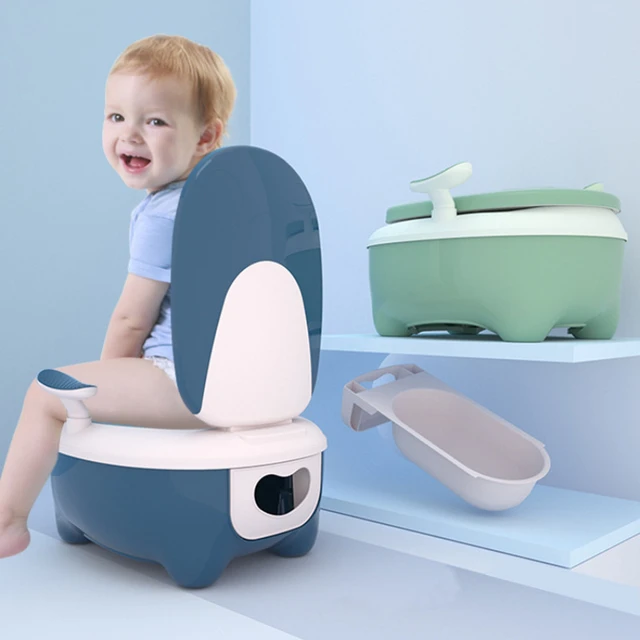 Types of Baby Toilet Seats
Types of Baby Toilet Seats
Potty Seat Inserts:
Potty seat inserts are designed to fit inside the regular toilet seat, creating a smaller and more child-friendly seating area.
These inserts can be easily removed and cleaned after use.
Training Seat with Ladder:
A training seat with a ladder is an adjustable and freestanding option that comes with a ladder for toddlers to climb onto the toilet independently.
This type of seat provides additional stability and support for children during toilet use.
Travel-Friendly Options:
Travel-friendly baby toilet seats are portable and collapsible, same as travel toilet, making them convenient for use outside of the home.
These seats are easy to fold and store, ideal for ensuring consistency in potty training routines.
Considerations for Choosing a Baby Toilet Seat
Size and Stability:
When selecting a baby toilet seat, consider its size and stability to ensure a proper fit and safety for your child.
Look for seats that can securely attach to the adult toilet seat and have a weight capacity suitable for your child’s needs.
Comfort and Design:
Choose a baby toilet seat that offers comfort and support during use.
Consider features like padded seating areas, ergonomic design, or fun prints to make potty training engaging and enjoyable for your child.
Cleaning and Maintenance:
Look for baby toilet seats that are easy to clean, with smooth surfaces and removable components.
Regularly sanitize the seat with mild soap and water, and avoid using harsh chemicals that may irritate your child’s sensitive skin.
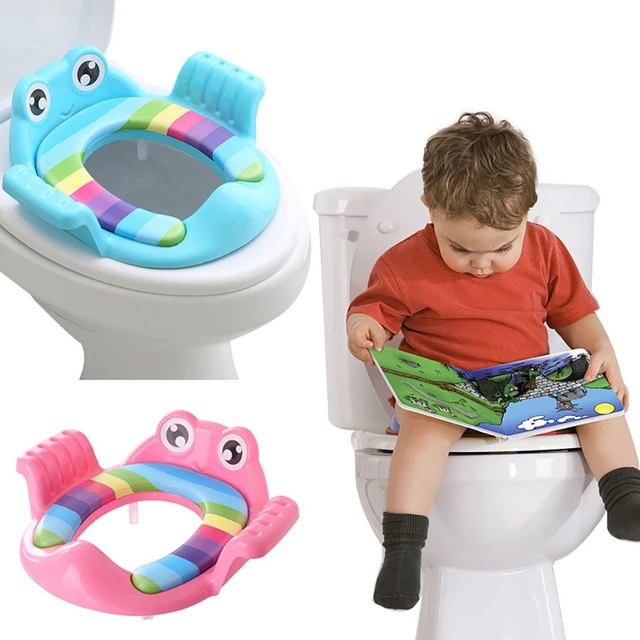 Encouraging and Supporting Potty Training
Encouraging and Supporting Potty Training
Positive Reinforcement:
Praise and reward your child for their efforts and successes during potty training.
Encouragement and positive reinforcement motivate children to continue their progress towards independence.
Establish a Routine:
Create a consistent potty training routine, including regular toilet visits and setting specific times for sitting on the toilet.
This routine helps children develop a habit and understand toilets as part of their daily routine.
Patience and Understanding:
Each child progresses at their own pace during potty training.
Provide patience, understanding, and support to your child, creating a nurturing environment for their learning journey.
Properly use and fit a baby toilet seat:
To properly use and fit a baby toilet seat, you can follow these steps:
Choose the right size:
Baby toilet seats come in various sizes, so it’s important to select one that fits securely on your baby toilet. Check the dimensions and specifications provided by the manufacturer to ensure a proper fit.
Clean and prepare the toilet:
Before placing the baby toilet seat, thoroughly clean and sanitize the toilet bowl to maintain good hygiene. Wipe the seat surface and make sure there are no loose or sharp edges that could harm the child.
Position the baby toilet seat:
Take the baby toilet seat and position it on top of the toilet bowl, aligning it with the rim. Make sure the seat is centered and securely attached to prevent any movement or instability.
Secure the seat:
Most baby toilet seats come with adjustable hinges or straps that allow for a secure and tight fit. Follow the manufacturer’s instructions to correctly fasten and secure the seat to the toilet bowl. Ensure it is stable and does not wobble when the child sits on it.
Encourage proper seating posture:
Guide your child to sit properly on the baby toilet seat, ensuring their feet are flat on the ground or supported by a step stool. Encourage them to maintain good posture and balance while using the toilet seat.
Supervise and assist:
Always supervise your child during toilet usage, especially when they are using a baby toilet seat. Provide assistance when needed, and teach them proper hygiene practices, such as wiping, flushing, and handwashing.
By following these steps, you can properly fit and utilize a baby toilet seat on your baby toilet, allowing your child to comfortably and safely use the toilet during their potty training journey.
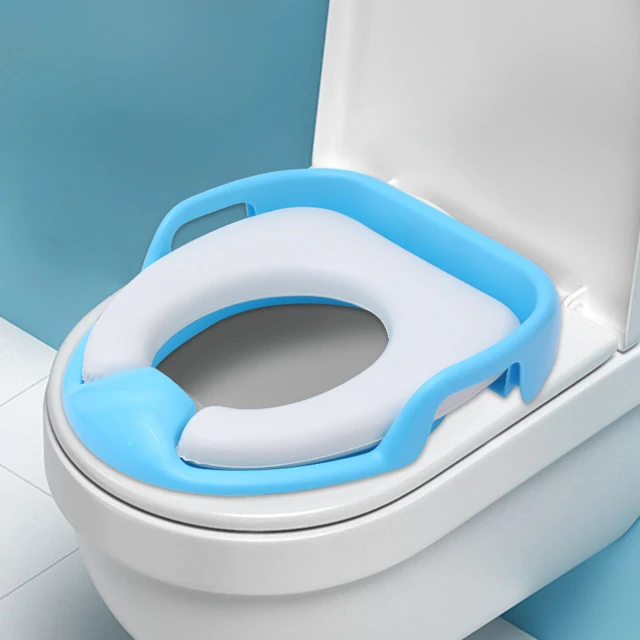 Conclusion:
Conclusion:
A baby toilet seat plays a vital role in promoting independence and hygiene during the potty training phase. By understanding the features, benefits, and considerations associated with a baby toilet seat, parents and caretakers can select the right option for their child’s needs. Regular cleaning and maintenance ensure the durability and hygiene of the seat. With the comprehensive information provided in this guide, individuals can confidently support their child’s potty training journey and help them develop essential life skills. Embrace the convenience and comfort of a baby toilet seat, making potty training a positive and successful experience.
